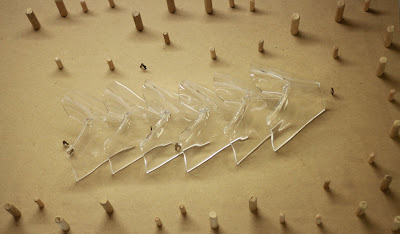The Explorations unit has shown me that designers don’t always have to completely look back to history for help. They truly explored new ideas and inspirations. While majority of architects seemed to design very new and modernistic buildings, we can tell that they still looked back to history. This is why there is the question of whether they were looking backward or forward. Old things were brought into thoughts through modern buildings, but in a completely different way than how it was originally done.
Art Nouveau came around in the late 19th century and early 20th – an experimental stage in fine arts inspired experimentation in design (that’s new). One of the more popular architects of this period was Antonio Gaudi. When I look at some of his work, I see a very surrealism-like look. The Surrealism style of art was starting in the early 1900s and Gaudi certainly could have been inspired from that style. The facades that he put on apartment buildings show this crazy sort of style and his interest in skin and bones, as well as nature. Casa Batilo in Spain and Casa Mila are both good examples of this. I think art is something, even today, that designers can look upon for ideas. Going to the Weatherspoon Art Museum a few weeks ago helped me remember that art and design are so connected.
Perhaps one of the biggest themes from this unit (in my opinion) would be the idea of the machine and good design for all. As Le Corbusier smartly stated, “A house is a machine for living – it should be as practical as a typewriter, a phone, an automobile”. This quote is so interesting to me, as I’ve written about it a couple times in previous posts. The idea of practicality in a home is something that seems to be a necessity; every house should really have it. For example, in Le Corbusier’s Unite d’habitacion, there includes a coffee shop, grocery store, daycare, and more commodities. Why not make life easier on humans? We are the ones who will be using these buildings. This Idea that Le Corbusier brought upon makes me think about my future designs and how I am able to make it more of a “machine”.
The creation of Chicago, Illinois as the “Second City” is another theme that we talked about. I think this is important of the explorations unit because it shows that people were ready to start something new and truly step away from the box. It’s like Chicago challenged New York City with their innovative skyscrapers and slick aesthetic.
The image I chose to support this unit is a picture of the Villa Savoye by Le Corbusier. This house shows what the architect means by a “machine for living”. It includes Le Corbusier’s five rules: pilotis (building floats off landscape), ribbon windows, free and open floor plan, roof garden to replace the space that was taken off the land, and inspiration from the machine (designed after a 1927 car).

www.cambridge2000.com/gallery/html/PC1913149.html














